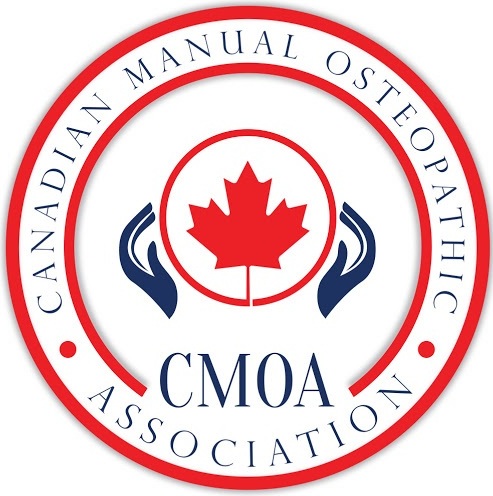Dr. Still believed that illness was related to problems associated with the musculoskeletal system and manipulation could treat the problems. In addition, Dr. Still advocated healthy living and abstinence from alcohol. His treatment regime forbade patients from taking any type of medication. Dr. Still opened the American School of Osteopathy, the first osteopathic school at Kirksville, Missouri in 1892. Students at the school formed the organization now known as the American Osteopathic Association (AOA) in 1897. The organization implemented standards for osteopathic medicine education. The AOA was accredited by the U.S. Department of Health, Education, and Welfare in 1952 and received accreditation from the Council for Higher Education in 1967. Standards for curriculum and length of study were formed by the Associated Colleges of Osteopathy in 1898. Today, people in Canada benefit from both European-trained osteopaths (non-physician manual practitioners) and practitioners trained in Canada. Both provide individual benefit of skills and knowledge of to develop a distinctly Canadian system of osteopathic care. Many of the training programs in Canada emphasize research delivering high standards of osteopathic education, training, and treatment benefiting practitioners and patients.

Welcome To....

About Manual Osteopathy
Manual Osteopathy is a gentle, holistic, safe and effective form of hands-on therapy which features the interrelationship between structure and function of the human body. The primary focus is the musculoskeletal system (muscles, fascia, ligaments and joints), organs and the central nervous system. Manual Osteopaths do not concentrate only on the problem area but the root cause of pain. They believe in the body’s natural ability to heal itself and are trained to treat conditions based on anatomy, physiology, pathology and how they relate to the osteopathic principles. They will evaluate and return balance to the musculoskeletal, cranial, cardiovascular, visceral and neurological systems of the body.
Benefits of Osteopathy:
• Enhances athletic performance
• Reduces risk of injury
• Increases range of motion
• Increases energy
• Treats spinal problems resulting from poor posture or spinal disc injuries
• Reduces tension in the body
• Relieves tension headaches and migraine headaches
• Reduces visible scarring and adhesion on the skin
• Treats trauma from accidents, sports injuries and motor vehicle injuries
• Reduces blood pressure and associated diseases
History of Osteopathic Medicine

Dr. Andrew Taylor Still founded the practice of osteopathic medicine in 1874. Dr. Still was an American physician and surgeon during the Civil War. He sought further understanding of the medical profession and through research and experience he decided there was a better way to treat patients than the conventional treatments, following the deaths of three of his children to spinal meningitis.
Philosophy of Osteopathic Treatment

The philosophy of osteopathic treatment is explained in a book written by Dr. Still called Philosophy of Osteopathy. This book from the end of the 1800s explains why techniques are applied and the benefits of osteopathic treatments. The philosophy has three fundamental theories.
- 1.The musculoskeletal system is a element in maintaining good health.
- 2.The body has a natural ability of self heal and self regulate.
- 3.The parts of the body make up a unified whole.
What to Expect:
An initial consultation will take place before any active treatment or management begins. During the consultation, the Registered Manual Osteopath will discuss the patient’s health problems, listen and take notes. Next, they will do a physical examination.
This includes a postural evaluation with regard to the centre line of gravity done looking at how you move and how you stand still. Range of motion tests will be performed to identify joint restrictions. Palpation is used to assess muscular, fascial and organ mobility and motility. Evaluation and treatment will occur at the same time as the practitioner is always assessing during the actual hands-on treatment. The Registered Manual Osteopath will monitor the response of the body during treatment. One usually feels better after a treatment although it is possible to feel achy and/or sore after the treatment and up to 48 hours. Please feel free to bring any and all test results, scans, X-rays, MRIs or diagnosis to the consultation or treatment. The patient should wear loose clothing that is non-restricting to simplify ease of movement during the session. Manual Osteopathy is tailored to meet the requirements of the individual patient and techniques are selected to meet the patient’s needs. It relieves pain, improves mobility and to restore health and vitality. Treatment focuses on getting to the root of the problem, not just addressing and or suppressing the symptoms.
PROTECTION OF THE PUBLIC
CMOA Association has a mandate to regulate the practice of the profession of its members, it must investigate complaints about professional services provided by members. Among the online resources (below), you will find a description of the complaint process and the complaint form to fill in to describe your concern.
Before filing a formal complaint with CMOA, it is good to discuss the problem with the concerned member . In some cases, members do not know the concerns of their customers and want to try to resolve them directly.
You can also contact CMOA and speak to a member of the investigation and complaint resolution team before filing a formal complaint. The investigator will give you suggestions and important information that will help you choose how you want to proceed.
To get CMOA code of ethics: Click here
To get CMOA Code of Conduct: Click here
To access complaint form: Click here
© 2008-2019 CMOA ASSOCIATION | All Rights Reserved.
CMOA-Canadian Manual Osteopathic Association
204-1239 Manahan Avenue, Winnipeg, Manitoba R3T 5S8.